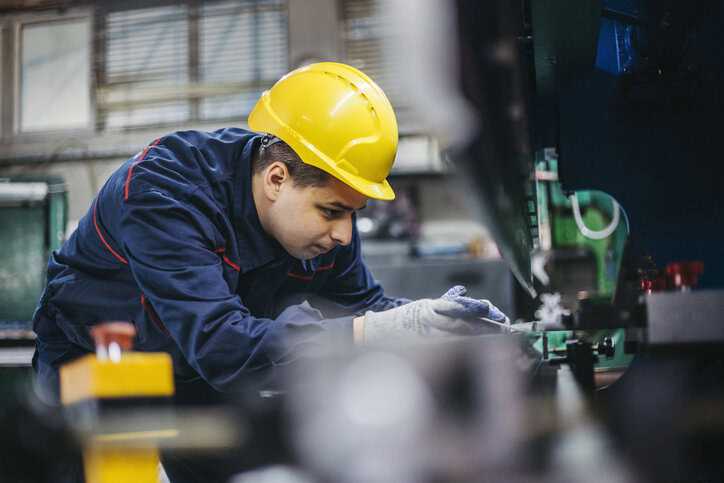How Regular Maintenance Can Prevent Breakdowns and Minimize Downtime

Investing in the critical machinery that puts operation technologically ahead of the curve is a crucial step in a competitive marketplace. But it’s only a first step.
All of those expensive devices, essential machinery, equipment, and infrastructure must function at optimal levels to maximize an organization’s benefits. That’s why regular maintenance, in asset-intensive industries, is one of the most important steps.
Understanding the nature of industrial maintenance and implementing a few key strategies can simplify operations, solidify productivity, and sidestep potentially costly downtime.
Maintenance 101
Essentially, there are two kinds of maintenance: preventive and reactive. Both have interconnected and overlapping sub-types.
Preventive maintenance, or scheduled maintenance, is just that—regular servicing intended to prevent major failures, performed at intervals based on time (e.g., every six months) or use (every 3,000 miles). Cleaning, lubrication, inspection, and minor adjustments, among others, fall under this umbrella. The downsides are that some parts may be routinely replaced while still having significant usable life, and other parts may be damaged while maintenance is performed. Sub-types include:
- Predictive maintenance gathers data from constant monitoring then uses that data to predict and circumvent failure.
- Prescriptive maintenance takes data and suggests resolution, for example, shortening run times, slowing run speeds, and lubrication.
- Detective maintenance evaluates both in-service and failed equipment. Testing emergency lighting is an example of detective maintenance. Replacing the battery is classic preventive maintenance.
Reactive maintenance is simply maintenance that is unplanned, occurring after a failure or an incident takes a device out of service or impairs its function. The goal is to return the device to full performance. Common forms are:
- Corrective maintenance seeks to improve performance after less-than-optimal functioning is discovered.
- Breakdown maintenance returns out-of-service equipment to functioning levels, allowing the resumption of production.
The Importance of Maintenance
A proactive maintenance plan saves costs, increases efficiency, decreases stress and may even, through the collection of data that identifies pain points in the production process, foster future innovation. Let’s take a deeper look:
Cost
Regular maintenance extends the longevity of assets and avoids the costs of replacement or emergency repairs. Optimized through predictive analysis, the cost of the maintenance itself is lessened by being performed only when necessary, rather than on a schedule. Further, regular, documented maintenance should help retain warranty coverage in the case of unexpected breakdowns and protect potential equipment resale value.
Safety
Unanticipated mechanical failure can be dangerous. Proactive measures prevent accidents. Well-maintained equipment fosters worker confidence, and therefore worker productivity, while also mitigating potential ownership liability for accidents in the workplace.
Productivity
Production disruptions cost money. Preventive maintenance can be performed during downtime or at off-peak production times. Moreover, properly maintained equipment can help ensure compliance with industry regulations and standards and company standards for quality and safety. Rigorous maintenance plans make schedules and budgets easier to manage.
How to Implement a Maintenance Plan
The basics of implementing a regular maintenance plan are actually quite simple:
- Follow the manufacturer’s guidelines for all equipment and systems.
- Record all maintenance activity—and make sure all involved know where and how to document that activity.
- Train your team in basic maintenance for the equipment it uses.
- Use quality parts and quality service partners.
Beyond that, consider the following:
Priorities: A good plan recognizes which tasks are the most important, which require the most resources and how each piece of equipment fits into the big picture, maintenance-wise.
Adaptability: Maintenance strategies should evolve to ensure continued effectiveness. Continuous evaluation and refinement should reflect experience gained throughout the process as well as advancements in technology and changing business needs. All of the above require communication between maintenance teams, production crews, and supervisors—all of whom should be empowered to collaborate and provide feedback and should receive regular performance reviews.
Investment: Data analytics software, sensors, and even enhanced training specific to those technologies are costs that should be considered. The real-time collection of data and monitoring of conditions capture information that can be used by the right personnel to create maintenance plans that work now and can grow moving forward.
Ultimately, responsible business stakeholders seek to maximize efficiency and safety, minimize costs and downtime, and foster an environment of professional pride. At its essence, a regular maintenance program is the foundation for all those ingredients of a successful business.
Contributing Author: Julie Workman, Marketing Manager, Acieta
Julie Workman is Marketing Manager for Acieta, which specializes in industrial robotics automation that helps North American manufacturers be globally competitive.






